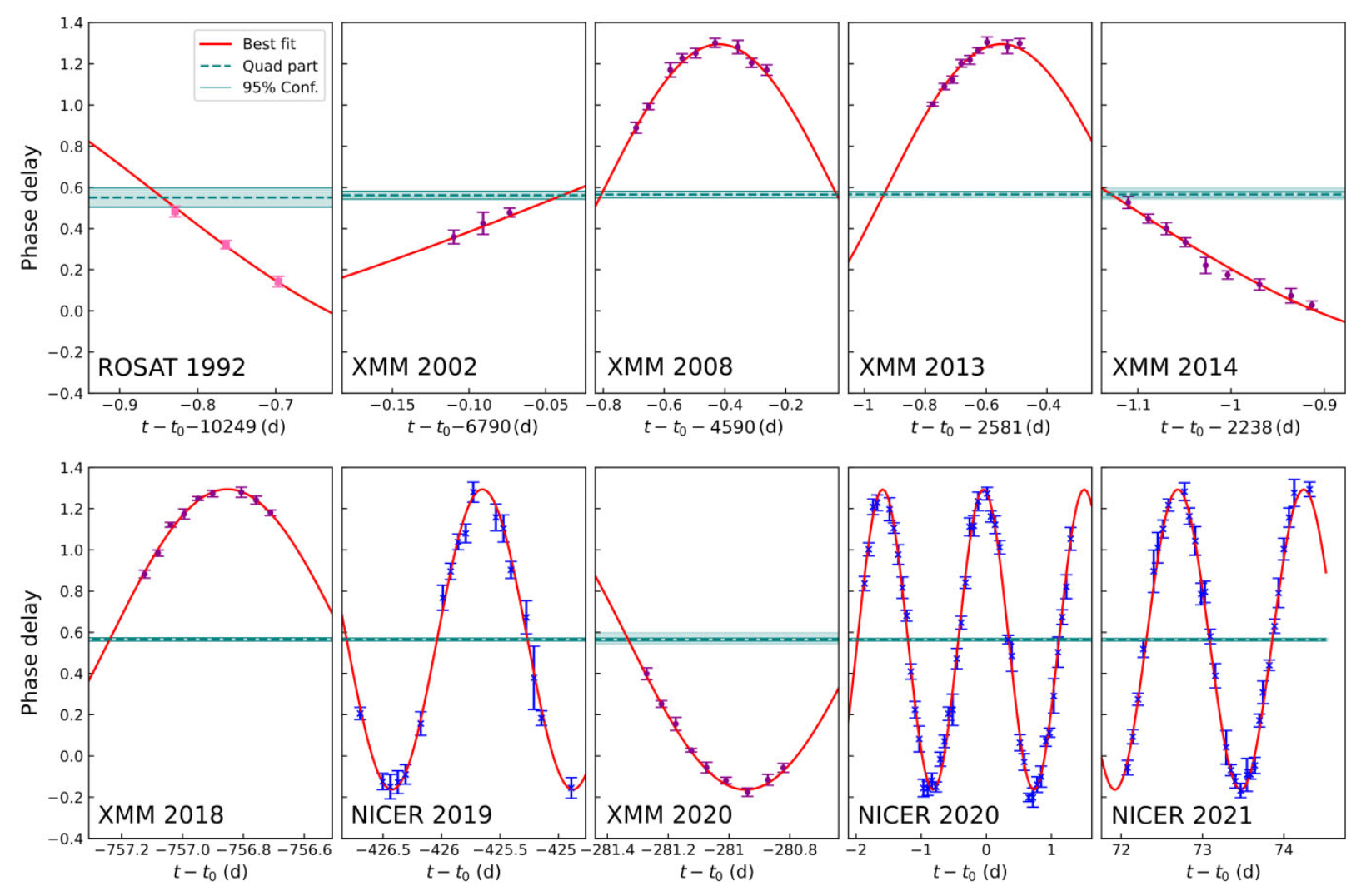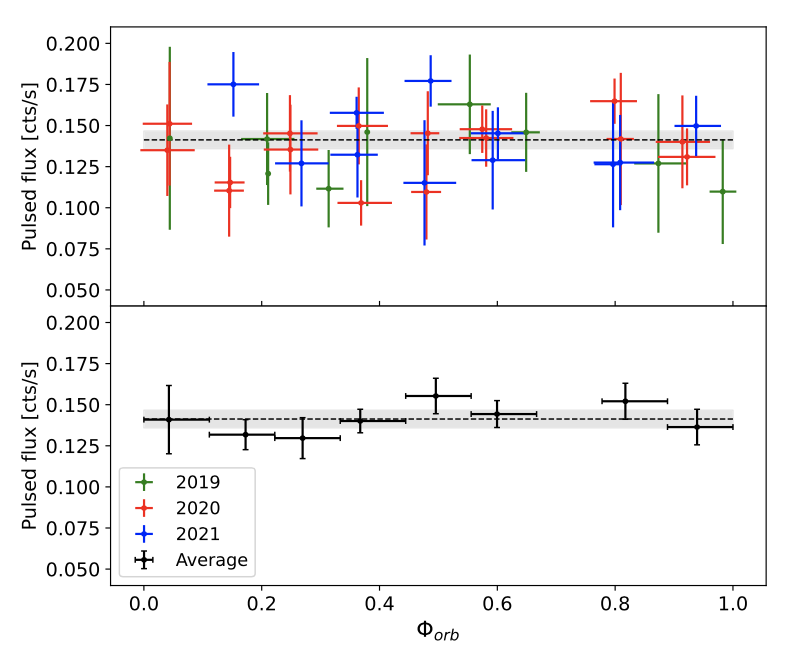NICER / ISS Science Nugget
for June 15, 2023
A double-dwarf binary
At a distance of approximately 1,700 light-years from Earth, the star HD 49798 has long been recognized for its unusual properties. It belongs to a rare class of hot, low-mass, helium burning stars (called O-type subdwarfs), and its visible-light modulations clearly indicate that it is in a 1.55-day binary system, but no emissions from the companion were evident in early observations. X-ray data in the 1990s revealed a source of high-energy emission positionally coincident with HD 49798, and also pulsing every 13.2 seconds; this source, named RX J0648.0-4418, was observed on multiple occasions by the European missions ROSAT and XMM-Newton. The resulting data suggested that the pulsing companion, RX J0648.0, was likely a white-dwarf star, but the possibility of a neutron star could not be ruled out. NICER observations, through its General Observer program, were carried out in 2019, 2020, and 2021, and a paper describing the results, by M. Rigoselli (Institute for Astrophysics, Milan, Italy) and collaborators, was recently accepted for publication in the peer-reviewed UK journal Monthly Notices of the Royal Astronomical Society.
Rigoselli and collaborators report that NICER's measurements of the pulsations provide, for the first time, a full characterization of the companion star's orbit. When this information is coupled with the orbital motion of HD 49798 from measurements of its optical emission, the component stellar masses, orbital separation, and orbital inclination (nearly edge-on, resulting in eclipses) of the whole system can be derived. The team uses these results to firmly rule out the possibility of a neutron star for RX J0648.0, arguing persuasively that it is a white dwarf. The pulsations result from a hot-spot on the white-dwarf surface due to accretion of matter from HD 49798, likely funneled along the white dwarf's magnetic field. Unlike most accreting systems, the flow of matter between the stars in this case does not form an accreting disk; the low rate of accretion, the small physical size of the donor star, and the latter's high temperature strongly suggest that the white dwarf is capturing a fraction of the matter released by HD 49798 in a strong stellar wind.
The mass of RX J0648.0 is unusually high for a white dwarf, 1.22 times the mass of our Sun, and close to the threshold of stability for white dwarfs; accretion is steadily adding mass. Moreover, the 13.2 s spin period of RX J0648.0 is gradually decreasing, consistent with slow contraction of the white dwarf due to gravity. These trends suggest that the HD 49798/RX J0648.0 system is a candidate for a future (within thousands of years) nearby "Type Ia" supernova explosion.


Left: Compilation of the available X-ray measurements of pulse arrival times, relative to a model without orbital motion, of RX J0648.0, spanning 30 years and three missions. NICER observations in 2019-21 provided the first sampling of a full orbit, multiple times. Sinusoidal evolution in pulse delay measurements (points with error bars) yield best-fit orbital parameters, represented by the red curve, which in turn provide estimates of the masses of the component stars. (Credit: Rigoselli et al. 2023)
Right: X-ray (0.2 to 0.55 keV photon energies) brightness of the pulsed emission from RX J0648.0 in NICER observations obtained in 2019 (green), 2020 (red) and 2021 (blue) as a function of orbital phase. The upper panel shows individual measurements, while points in the lower panel represent averages in phase bins with duration 1/9th of the 1.55-day binary period. A brief eclipse, in which our sightline to the accreting white dwarf is obstructed by the companion star, is evident around orbital phase 0.75. The dashed horizontal line in both panels is the best-fit constant-brightness level of pulsed emission, approximately 60% of the total emission. (Credit: Rigoselli et al. 2023)
<< Previous
Main Index